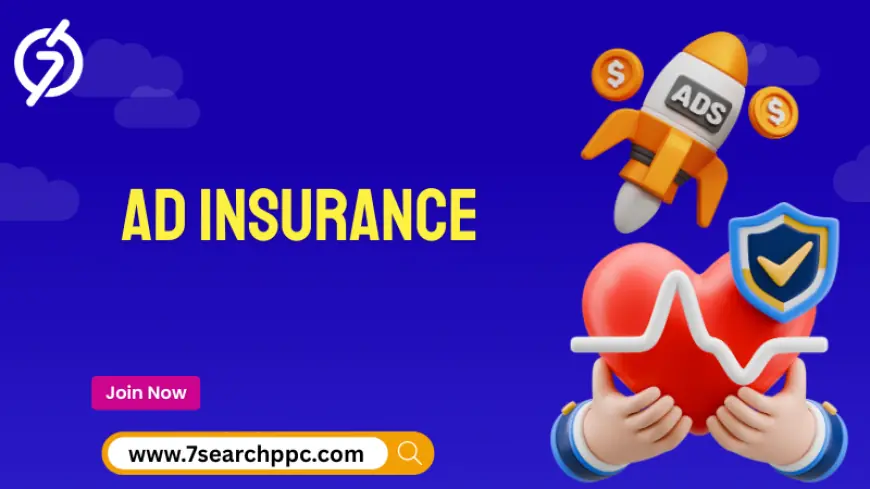Why Some Ad Insurance Strategies Fail (And How to Fix Them)

Advertising in the insurance sector is not always easy. Even with careful planning, some campaigns fall flat, leaving businesses wondering why their efforts didn’t work as expected. Ad Insurance, when used correctly, can help insurers reach the right people at the right time. But when strategies fail, it’s usually because of avoidable mistakes. Let’s break down why this happens and how to fix it with a smarter approach.
Common Reasons Why Ad Insurance Strategies Fail
There are several patterns that show up repeatedly when campaigns underperform. Some of the most common include:
1. Targeting the wrong audience
Insurance products are often niche-specific. If the campaign is shown to people who have no real need for coverage, the ads won’t deliver results. Proper segmentation is essential to avoid wasted spend.
2. Overlooking the messaging
Insurance can sound complicated. When ad copy is filled with jargon or technical words, it creates distance between the insurer and the customer. People want clarity, not confusion.
3. Weak call-to-action (CTA)
Ads that fail often don’t guide users clearly on the next step. A CTA like “Get Started Today” or “See Your Options” is more effective than vague statements.
4. Poor budget allocation
Spreading budgets too thin or placing too much focus on one channel often limits visibility. A balanced approach works better, especially for competitive insurance keywords.
For deeper insight into boosting insurance sales with more effective advertising methods, resources like this guide on insurance advertising can help explore specific strategies.
Getting the Foundation Right
The first step toward fixing failed campaigns is to reset the foundation. Marketing Insurance strategies need to focus on real people, not just numbers. Understanding demographics, lifestyles, and buying behavior helps in designing campaigns that truly connect.
Smart marketers test multiple ad creatives to see which message resonates most. This simple adjustment can prevent wasted impressions and improve engagement.
Crafting Clear and Relatable Messaging
People don’t buy insurance policies every day. That’s why Promotional Insurance campaigns should use simple, relatable language that speaks to everyday concerns. For example, instead of emphasizing “comprehensive policy structures,” it’s better to highlight “peace of mind for your family’s future.”
Ads also work better when they highlight trust. Including reviews, testimonials, or social proof makes campaigns more persuasive and prevents failure due to low credibility.
Adjusting for Long-Term Success
Many insurers treat campaigns as one-time projects. But Campaign Insurance strategies are most effective when monitored and adjusted regularly. Tracking key metrics like cost per lead (CPL), click-through rates (CTR), and conversion rates gives valuable signals about what’s working.
Instead of abandoning a campaign after weak performance, small tweaks in targeting, ad creative, or landing page design often revive results. Marketers who keep testing tend to achieve long-term growth compared to those who stop after the first setback.
How to Fix a Failed Ad Insurance Strategy
- Audit the campaign: Check audience targeting, ad copy, visuals, and CTA strength.
- Simplify the message: Replace jargon with human-friendly language.
- Optimize the landing page: Make sure it’s fast, clear, and relevant to the ad promise.
- Test small, scale fast: Run smaller test campaigns to see what works, then scale up winning versions.
- Leverage trusted platforms: Using a network that specializes in insurance advertising can make a difference. You can even launch a test campaign without heavy upfront investment.
Final Thoughts
When Ad Insurance strategies fail, it doesn’t mean the idea was wrong — it usually means the execution needs refinement. Insurance is a sensitive purchase, and customers expect clarity, trust, and value. By focusing on the right audience, building clear messaging, and continually testing campaigns, insurance marketers can avoid common pitfalls and build strategies that deliver consistent results.
Success in insurance advertising doesn’t come from a single “perfect” campaign, but from an ongoing process of learning, improving, and adapting.
What's Your Reaction?
 Like
0
Like
0
 Dislike
0
Dislike
0
 Love
0
Love
0
 Funny
0
Funny
0
 Angry
0
Angry
0
 Sad
0
Sad
0
 Wow
0
Wow
0


























































